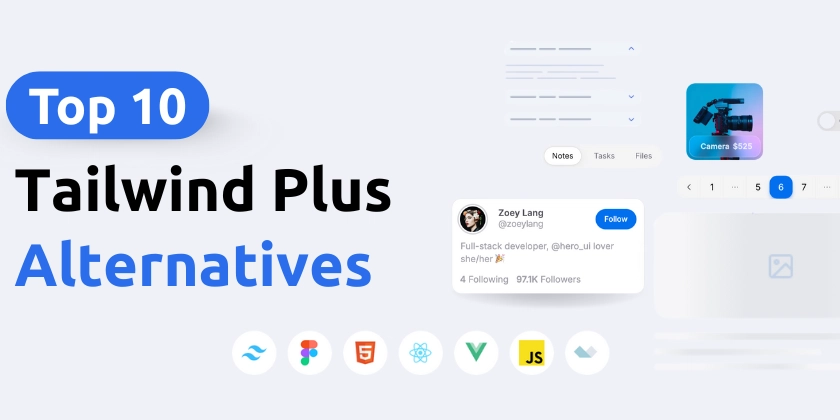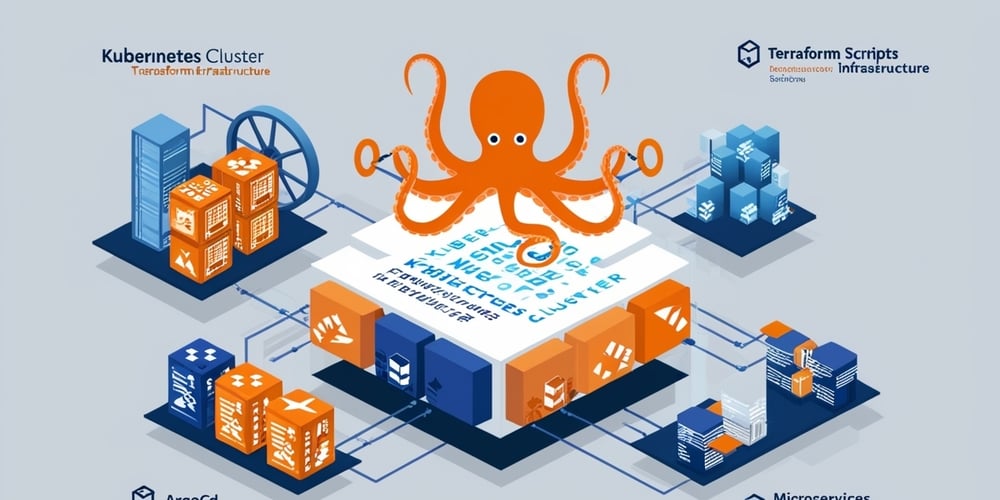
App of Apps Pattern: Efficient Kubernetes Deployment Strategies with Terraform and ArgoCD

Table of Contents 1. Introduction Cloud-Native Technologies...
Introduction
In the rapidly evolving landscape of cloud-native technologies, organizations are continuously seeking strategies to streamline infrastructure provisioning, enhance deployment reliability, and improve team collaboration.
The combination of Terraform, Kubernetes, ArgoCD, and GitOps principles offers a powerful solution to these challenges.
The Traditional Infrastructure Challenge
Traditionally, infrastructure management and application deployments were manual, error-prone processes:
- Inconsistent environments
- Configuration drift
- Limited visibility into changes
- Complex rollback procedures
- Slow and risky deployments
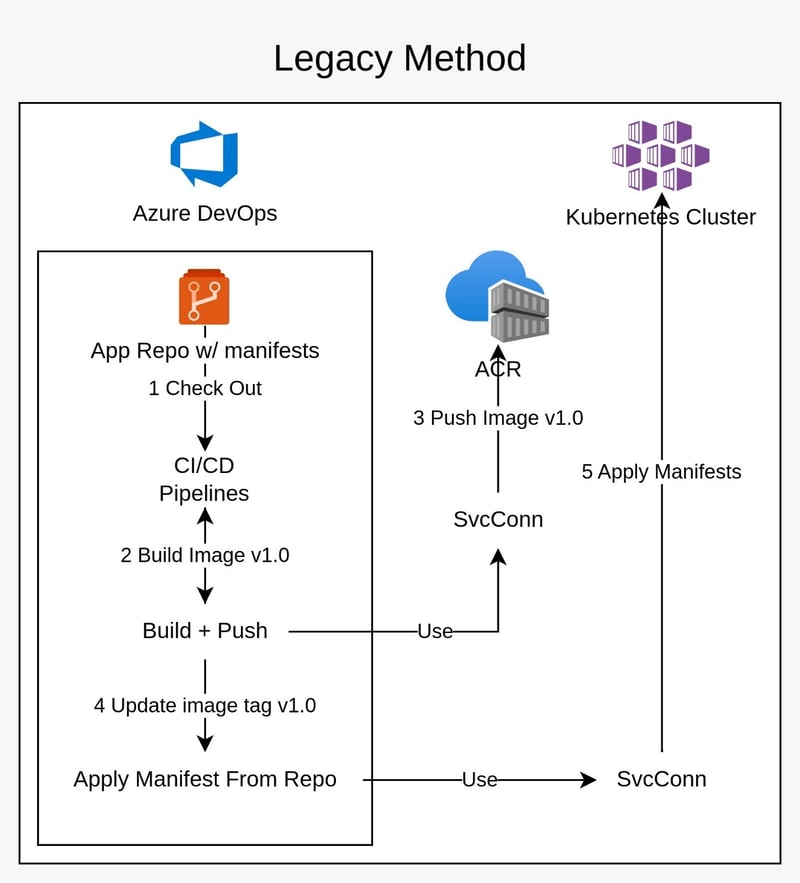
Enter the Modern Approach Infrastructure as Code and GitOps
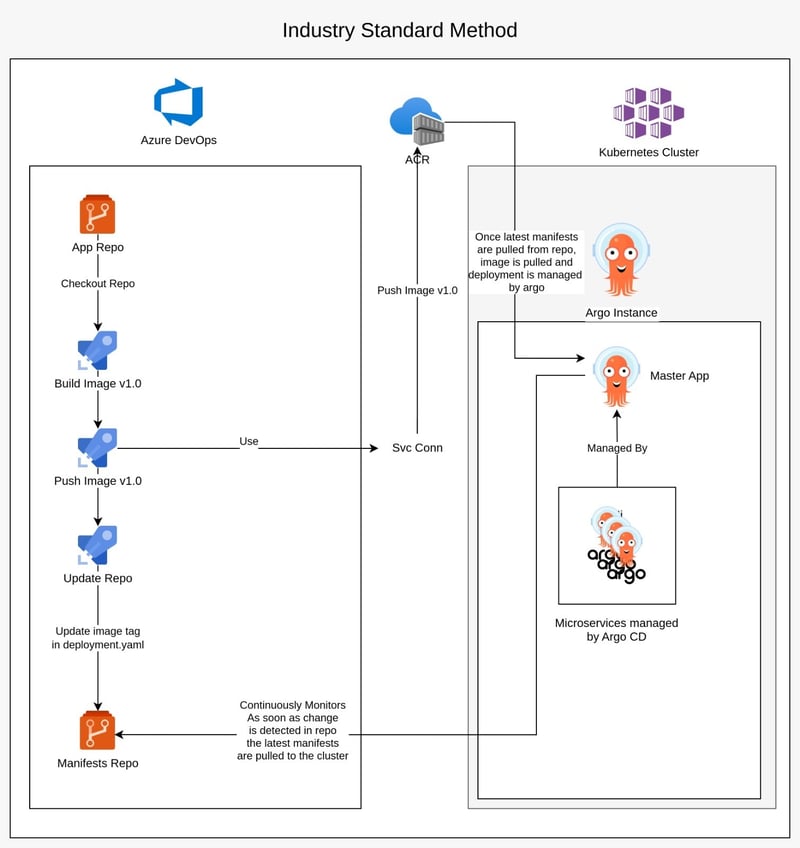
Terraform Infrastructure Provisioning Reimagined
Terraform transforms infrastructure management by:
- Defining infrastructure using declarative configuration files
- Supporting multi-cloud and hybrid cloud deployments
- Enabling consistent, reproducible infrastructure creation
- Providing a clear, version-controlled view of infrastructure state
Terraform Kubernetes Cluster Provisioning Example
In a project, where my project structure is as follows:
├── Makefile
├── README.md
├── plans
│ └── plan.tfplan
├── resources.helm.tf
├── resources.main.tf
├── resources.outputs.tf
├── resources.variables.tf
├── terraform.backend.tf
├── terraform.data.tf
├── terraform.locals.tf
└── terraform.provider.tf
In resources.main.tf , I define the resources required to spin the kubernetes cluster as seen below:
module "network_security_group" {
source = "git::ssh://git@ssh.dev.azure.com/v3/<organizationName>/<projectName>/<repoName>//modules/network_security_group"
name = "rnd-nsg"
location = data.azurerm_resource_group.existing.location
resource_group_name = data.azurerm_resource_group.existing.name
rules = [
{
name = "nsg-rule-1"
priority = 100
direction = "Inbound"
access = "Allow"
protocol = "*"
source_port_range = "*"
destination_port_range = "*"
source_address_prefix = "*"
destination_address_prefix = "*"
},
{
name = "nsg-rule-2"
priority = 101
direction = "Outbound"
access = "Allow"
protocol = "*"
source_port_range = "*"
destination_port_range = "*"
source_address_prefix = "*"
destination_address_prefix = "*"
}
]
depends_on = [data.azurerm_resource_group.existing]
tags = merge(var.tags)
}
module "virtual_network" {
source = "git::ssh://git@ssh.dev.azure.com/v3/<organizationName>/<projectName>/<repoName>//modules/virtual_network"
name = "rndvnet"
location = data.azurerm_resource_group.existing.location
resource_group_name = data.azurerm_resource_group.existing.name
address_space = ["10.0.0.0/16"]
depends_on = [data.azurerm_resource_group.existing, module.network_security_group.this]
tags = merge(var.tags)
}
module "k8ssubnet" {
source = "git::ssh://git@ssh.dev.azure.com/v3/<organizationName>/<projectName>/<repoName>//modules/subnet"
name = "rndsubnetk8s"
resource_group_name = data.azurerm_resource_group.existing.name
virtual_network_name = module.virtual_network.virtual_network_name
subnet_address_prefix = ["10.0.1.0/24"]
service_endpoints = ["Microsoft.Storage", "Microsoft.Web"]
delegation_name = null
service_delegation_name = null
service_delegation_actions = null
depends_on = [data.azurerm_resource_group.existing, module.virtual_network.this, module.network_security_group.this]
}
module "podsubnet" {
source = "git::ssh://git@ssh.dev.azure.com/v3/<organizationName>/<projectName>/<repoName>//modules/subnet"
name = "rndsubnetpods"
resource_group_name = data.azurerm_resource_group.existing.name
virtual_network_name = module.virtual_network.virtual_network_name
subnet_address_prefix = ["10.0.2.0/24"]
service_endpoints = ["Microsoft.Storage"]
delegation_name = "aks-delegation"
service_delegation_name = "Microsoft.ContainerService/managedClusters"
service_delegation_actions = ["Microsoft.Network/virtualNetworks/subnets/join/action"]
depends_on = [data.azurerm_resource_group.existing, module.virtual_network.this, module.network_security_group.this]
}
module "subnet_nsg_association" {
source = "git::ssh://git@ssh.dev.azure.com/v3/<organizationName>/<projectName>/<repoName>//modules/subnet_network_security_group_association"
subnet_id = module.k8ssubnet.subnet_id
network_security_group_id = module.network_security_group.id
depends_on = [data.azurerm_resource_group.existing, module.k8ssubnet.this, module.network_security_group.this]
}
module "container_registry" {
source = "git::ssh://git@ssh.dev.azure.com/v3/<organizationName>/<projectName>/<repoName>//modules/container_registry"
resource_group_name = data.azurerm_resource_group.existing.name
location = data.azurerm_resource_group.existing.location
name = "rndacrteo"
sku = "Standard"
is_admin_enabled = true
is_public_network_access_enabled = true
depends_on = [data.azurerm_resource_group.existing]
tags = merge(var.tags)
}
module "kubernetes" {
source = "git::ssh://git@ssh.dev.azure.com/v3/<organizationName>/<projectName>/<repoName>//modules/kubernetes/kubernetes_cluster"
name = "k8s-cluster"
resource_group_name = data.azurerm_resource_group.existing.name
location = data.azurerm_resource_group.existing.location
node_count = 1
dns_prefix = "rndaks"
vnet_subnet_id = module.k8ssubnet.subnet_id
vm_size = "Standard_A2_v2"
pod_subnet_id = module.podsubnet.subnet_id
kubernetes_version = "1.30.0"
is_role_based_access_control_enabled = true
sku_tier = "Free"
default_node_pool_name = "k8spool"
service_cidr = "10.1.0.0/16"
dns_service_ip = "10.1.0.10"
depends_on = [module.k8ssubnet.this, module.podsubnet.this]
}
module "k8s_role_assignment" {
source = "git::ssh://git@ssh.dev.azure.com/v3/<organizationName>/<projectName>/<repoName>//modules/role_assignment"
principal_id = module.kubernetes.kubelet_identity_object_id
role_definition_name = "AcrPull"
scope = module.container_registry.id
skip_service_principal_aad_check = true
}
Then in resources.helm.tf , I define the resources required to configure the helm charts into the above provisioned cluster
module "ingress_nginx" {
source = "git::ssh://git@ssh.dev.azure.com/v3/<organizationName>/<projectName>/<repoName>//modules/helm/helm_release"
chart = "ingress-nginx"
name = "ingress-nginx"
create_namespace = true
namespace = "ingress-nginx"
values = [
<<-EOF
controller:
service:
type: LoadBalancer
EOF
]
repository = "https://kubernetes.github.io/ingress-nginx"
providers = {
helm = helm.helmk8s
}
depends_on = [data.azurerm_kubernetes_cluster.cluster, module.kubernetes]
}
module "argocd" {
source = "git::ssh://git@ssh.dev.azure.com/v3/<organizationName>/<projectName>/<repoName>//modules/helm/helm_release"
chart = "argo-cd"
name = "argocd"
create_namespace = true
namespace = "argocd"
values = [
<<-EOF
server:
service:
type: ClusterIP
configs:
params:
"server.insecure": "true"
admin:
username: admin
EOF
]
repository = "https://argoproj.github.io/argo-helm"
providers = {
helm = helm.helmk8s
}
depends_on = [data.azurerm_kubernetes_cluster.cluster, module.kubernetes]
}
Next, we need to run a few commands to be able to access argoCD's server / CLI
ArgoCD Initial Setup and Configuration Guide
1. Password Reset and Retrieval
# Command Breakdown
# Reset the admin secret by clearing existing password data
kubectl patch secret argocd-secret -n argocd -p '{"data": {"admin.password": null, "admin.passwordMtime": null}}'
##### Restart ArgoCD server to generate new password
kubectl delete pods -n argocd -l app.kubernetes.io/name=argocd-server
##### Retrieve the initial admin password
kubectl -n argocd get secret argocd-initial-admin-secret -o jsonpath="{.data.password}" | base64 -d
We will use this password later
# What This Does
- Clears existing admin password
- Triggers ArgoCD to generate a new password
- Extracts the new password for login
2. RBAC (Role-Based Access Control) Configuration
# Edit RBAC ConfigMap
kubectl -n argocd edit configmap argocd-rbac-cm
# RBAC Policy Configuration
policy.csv: |
# Grant full admin access to all applications
p, role:admin, applications, *, *, *
# Set default role to admin
policy.default: role:admin
# Policy Explanation
p, role:admin, applications, *, *, *: Provides full access to all applicationspolicy.default: role:admin: Sets admin as the default role for all users
NOTE:In our case, we set role:admin, since there will only be one cluster admin that will have access to the kubernetes and/or argoCD server
3. Restart ArgoCD Server
# Restart ArgoCD to apply RBAC changes
kubectl -n argocd rollout restart deployment argocd-server
4. Login to ArgoCD
Since we don't expose our argocd server as a LoadBalancer, or Ingress, we need to access it using port-forwarding, this ensures further security
# Forward port to access ArgoCD server locally
kubectl port-forward service/argocd-server -n argocd 8888:443
##### Login using admin credentials
argocd login 127.0.0.1:8888 --username admin --password <retrieved-password>
Now you can use argocd CLI as well as, open localhost:8888 in the browser and ... Voila!
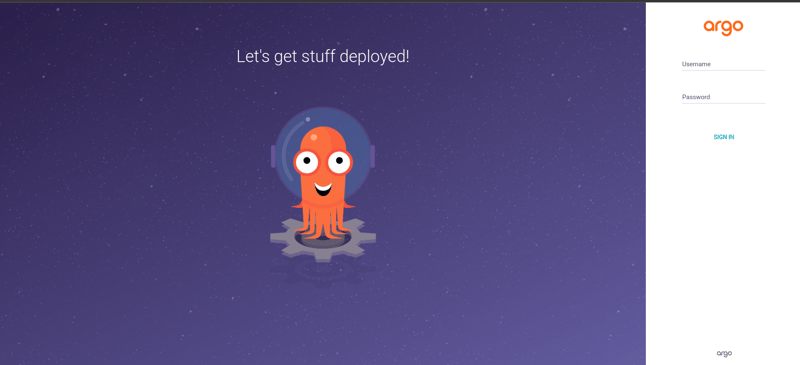
Important Notes
- Security Warning: The default admin role provides full cluster access
- Regularly rotate credentials
- Use strong, unique passwords
GitOps Workflow
ArgoCD bridges the gap between Git repositories and Kubernetes clusters:
- Declarative continuous delivery
- Automatic synchronization of application states
- Easy rollbacks and versioning
- Support for multiple sync strategies
ArgoCD Application Configuration
Application Repo
This repo contains the application code for the microservices, it can be one repo per microservice or it can be a monorepo that holds all microservice code.
It also contains the Pipelines that build and push the images to the Container Registry
./project
├── Azure-Pipelines
│ ├── azure-pipelines.yml
│ ├── azure-pipelines2.yml
│ └── azure-pipelines3.yml
├── Docker
│ ├── Dockerfile.1
│ ├── Dockerfile.2
│ ├── Dockerfile.3
│ └── nginx.conf
├── demo-app
│ ├── README.md
│ ├── angular.json
│ ├── package.json
│ ├── public
│ │ └── favicon.ico
│ ├── src
│ │ ├── app
│ │ │ ├── app.component.css
│ │ │ ├── app.component.html
│ │ │ ├── app.component.spec.ts
│ │ │ ├── app.component.ts
│ │ │ ├── app.config.server.ts
│ │ │ ├── app.config.ts
│ │ │ └── app.routes.ts
│ │ ├── index.html
│ │ ├── main.server.ts
│ │ ├── main.ts
│ │ ├── server.ts
│ │ └── styles.css
│ ├── tsconfig.app.json
│ ├── tsconfig.json
│ └── tsconfig.spec.json
├── demo-app2
│ ├── README.md
│ ├── angular.json
│ ├── package.json
│ ├── public
│ │ └── favicon.ico
│ ├── src
│ │ ├── app
│ │ │ ├── app.component.css
│ │ │ ├── app.component.html
│ │ │ ├── app.component.spec.ts
│ │ │ ├── app.component.ts
│ │ │ ├── app.config.server.ts
│ │ │ ├── app.config.ts
│ │ │ └── app.routes.ts
│ │ ├── index.html
│ │ ├── main.server.ts
│ │ ├── main.ts
│ │ ├── server.ts
│ │ └── styles.css
│ ├── tsconfig.app.json
│ ├── tsconfig.json
│ └── tsconfig.spec.json
└── demo-app3
├── README.md
├── angular.json
├── package.json
├── public
│ └── favicon.ico
├── src
│ ├── app
│ │ ├── app.component.css
│ │ ├── app.component.html
│ │ ├── app.component.spec.ts
│ │ ├── app.component.ts
│ │ ├── app.config.server.ts
│ │ ├── app.config.ts
│ │ └── app.routes.ts
│ ├── index.html
│ ├── main.server.ts
│ ├── main.ts
│ ├── server.ts
│ └── styles.css
├── tsconfig.app.json
├── tsconfig.json
└── tsconfig.spec.json
Let's setup the Azure Pipelines for all 3 demo apps, so images can be pushed into ACR for later deployment
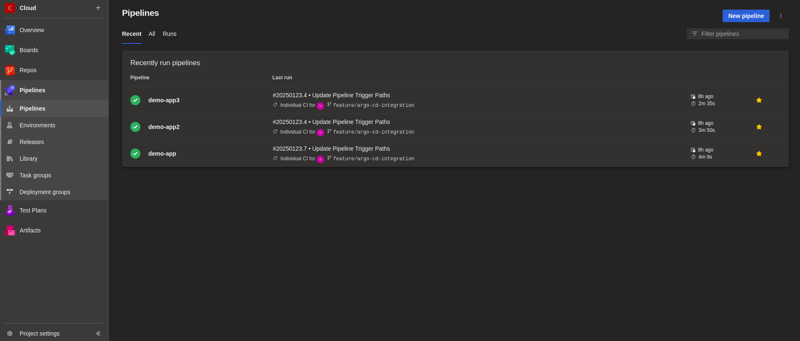
GitOps Repo
Next, we have the GitOps Repo that will be configured with ArgoCD to be monitored
./demo-app-manifests
├── manifests
│ ├── argocd
│ │ ├── argocd-application-master
│ │ │ └── masterapp.yaml
│ │ └── argocd-applications
│ │ ├── demo-app-argoapp.yaml
│ │ ├── demo-app2-argoapp.yaml
│ │ └── demo-app3-argoapp.yaml
│ └── main
│ ├── demo-app
│ │ ├── deployment.yaml
│ │ └── service-ingress.yaml
│ ├── demo-app2
│ │ ├── deployment.yaml
│ │ └── service-ingress.yaml
│ └── demo-app3
│ ├── deployment.yaml
│ └── service-ingress.yaml
└── readmes
├── README.md
└── argoCD.md
The manifests folder is crucial for managing your Kubernetes deployments and configurations using ArgoCD. Here's a detailed look at its contents:
argocd:
argocd-application-master/masterapp.yaml:
The main ArgoCD application configuration.
argocd-applications:
Contains multiple ArgoCD application configurations (demo-app-argoapp.yaml, demo-app2-argoapp.yaml, demo-app3-argoapp.yaml), following the "App of Apps" pattern.
This pattern allows you to manage multiple applications under a single ArgoCD application.
main:
demo-app, demo-app2, demo-app3:
Each folder contains Kubernetes manifests for deploying and exposing the respective frontend applications.
deployment.yaml:
Defines the deployment configuration for the application.
service-ingress.yaml:
Configures the service and ingress for the application.
Run Important ArgoCLI Commands
Add the Azure DevOps repository to ArgoCD using the SSH URL:
argocd repo add git@ssh.dev.azure.com:v3/myteo/Cloud/demo-app-manifests \
--ssh-private-key-path ~/.ssh/id_azure \
--upsert
Create a new ArgoCD project named demo-app-project:
argocd proj create demo-app-project \
--dest https://kubernetes.default.svc,* \
--description "demo app project" \
--src git@ssh.dev.azure.com:v3/myteo/Cloud/demo-app-manifests \
--upsert
Now we simply run:
kubectl apply -f ./manifests/argocd/argocd-application-master/masterapp.yaml
This deploys the master app to the argocd instance, which will now manage all the argoapps referenced under ./manifests/argocd/argocd-applications
This design is called the "App of Apps" pattern, similar to the master-slave node concept
The master app now handles deployment of any app yamls configured under the argocd-applications directory
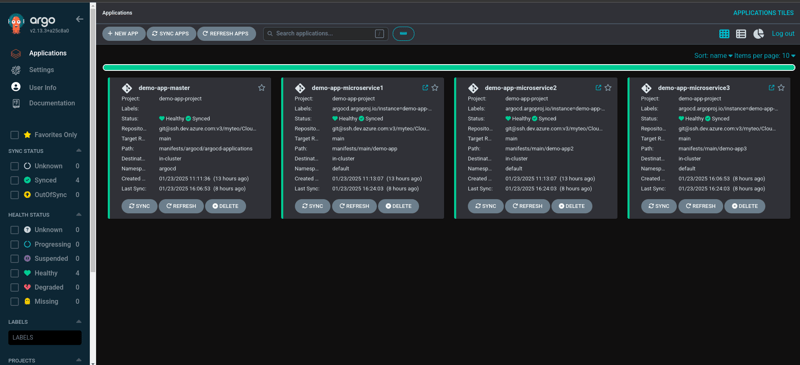
GitOps The Philosophical Shift
GitOps represents a paradigm shift in infrastructure and application management:
Core Principles
- Declarative Configuration: Everything is defined as code
- Version Control: Git becomes the single source of truth
- Automated Synchronization: Continuous reconciliation of desired and actual states
- Immutable Infrastructure: Predictable, reproducible environments
Benefits of This Approach
For Infrastructure Teams
- Reduced manual intervention
- Improved consistency
- Enhanced security through controlled changes
- Faster recovery from failures
For Development Teams
- Self-service deployment model
- Increased visibility
- Simplified collaboration
- Faster time-to-market
For Organizations
- Lower operational complexity
- Reduced human error
- Better compliance and auditing
- Scalable infrastructure management
Practical Implementation Strategy
-
Define Infrastructure with Terraform
- Create Kubernetes cluster configurations
- Set up networking and security groups
- Configure node pools and cluster settings
-
Install ArgoCD on Kubernetes
- Deploy ArgoCD using Terraform or kubectl
- Configure repository connections
- Set up application deployment configurations
-
Implement GitOps Workflow
- Store all configurations in Git repositories
- Use pull requests for change management
- Leverage ArgoCD for continuous deployment
Conclusion
The synergy of Terraform, Kubernetes, ArgoCD, and GitOps principles offers a robust, scalable approach to modern infrastructure and application management. By embracing these technologies, organizations can achieve unprecedented levels of efficiency, reliability, and agility.
Recommended Tools and Resources
- Terraform
- Kubernetes
- ArgoCD
- Helm
- GitHub/GitLab/Azure DevOps
- Prometheus
- Grafana
